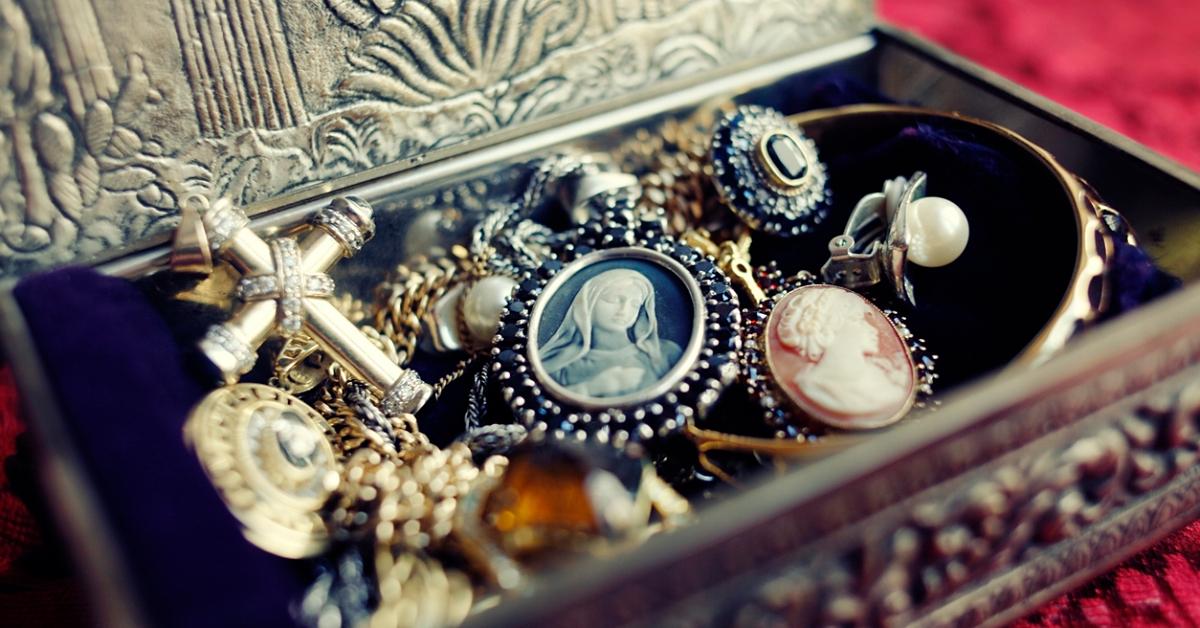Why Antique Jewelry Is More Sustainable Than Buying New, According to an English Antique Expert (Exclusive)
Published Jan. 10 2024, 11:28 a.m. ET

We've been conditioned to associate fine jewelry with luxury and romance. Precious metals and gemstones are symbolic of a gesture that goes beyond the everyday courtesies, and many gems have their own deeper meanings and metaphysical properties.
But rather than running to Kay or Zales for a shiny new piece, next time you want to treat yourself, antique jewelry may be worth investing in.
Extending the lifecycle of a preexisting item is vital for the sake of the planet, as it cuts down on carbon emissions, water and energy usage, and more, as per Vogue Arabia.
In an exclusive e-interview with Green Matters, antique dealer and Butter Lane Antiques founder Alex Alfieri discussed the lost art of antique craftsmanship, sustainability, social consciousness, and investing in a tangible legacy.
We've previously said that lab-grown diamonds are a girl's best friend, but antique diamonds are joining the friend group.

Why is purchasing antique jewelry a good investment? Rarity and character champion environmental destruction and ethical issues.
After working in the jewelry trade alongside his father for about a decade, Alfieri founded Manchester-based Butter Lane Antiques in 2012. The online antique jewelry company has relied heavily on social media for its success, an unusual entryway to the trade. As of publication, Butter Lane has over 124,000 Instagram followers and has worked with celebrities like Hilary Swank.
As Alfieri explains, there are so many reasons to opt for antique jewelry rather than new gems.
"Choosing antique jewelry isn't just about finding a stunning accessory; it's like adopting a little piece of history," Alex Alfieri exclusively tells Green Matters via email. "Each piece tells a unique story, offering a timeless connection to the past and a level of craftsmanship that we just don’t see in modern pieces."
Plus, antique jewelry is often around 20 percent cheaper than new jewelry, according to the Francis Alukkas jewelry company. Manufacturing costs don't impact pricing, and there's usually a value-added tax exemption.
Additionally, opting for antique jewels is "a way to be eco-conscious and invest in a legacy that transcends generations," according to Alfieri.
Imperial Consultants of Imperial College London noted that "mineral resource exploitation" leads to issues including "deforestation, soil disturbance, air emissions, surface water pollution, groundwater contamination, dust, [and] noise."
And according to the Clean Origin jewelry company, 1 carat of mined diamond is responsible for disturbing about 100 square feet of land and 6,000 pounds of mineral waste.
Alex Alfieri on why people should choose antique jewelry over a new diamond: "It's an investment in a love story that spans eras."
Alfieri encourages people to throw their cash at antique jewelry over new pieces on Valentine's Day and beyond.
"Embracing vintage pieces means not only celebrating the timeless beauty of the past, but also reducing the environmental impact of mining and promoting ethical practices," he says. "It's a choice that resonates with history, reduces our carbon footprint, and advocates for a more socially responsible approach to adorning ourselves."
So, you may think twice before buying a new pair of diamond earrings for that special someone. Conflict diamonds, also called blood diamonds (see Edward Zwick's 2006 film Blood Diamond) pose major sociopolitical problems. They are typically made by enslaved or low paid workers in conflict areas, and sold for money that funds wars and hurts civilians.
Though the international trade regime known as the Kimberley Process has set out to remove blood diamonds from the worldwide supply chain, loopholes remain. Unfortunately, the Kimberley Process doesn't mitigate the trade of other conflict gems and minerals.
Caring for antique jewelry is relatively simple.
"You're not just getting jewelry, you're investing in a piece that's uniquely yours, one of a kind, and heirloom worthy," Alfieri explains.
Especially if you're looking to pass down your fine "new" accessory (Butter Lane offers pieces dating back to the 1700s), properly caring for vintage jewelry is essential.
"Since these pieces have stood the test of time, they're generally pretty hardy. For a quick clean, a mixture of mild soap, warm water, and a soft toothbrush does wonders," Alfieri details. "It's gentle yet effective and steers clear of heavy-duty chemicals."
Though they may seem sturdy, Alfieri still recommends regularly checking antique pieces for loose stones.
"When it comes to those extra special, intricate pieces, especially pearls, consider a professional cleaning by a jeweler well-versed in the art of antique care," he concludes.
All in all, we think your boo will feel particularly regal in those vintage sapphire drop earrings.